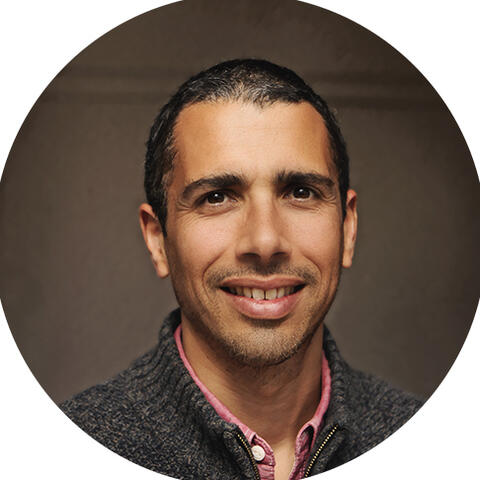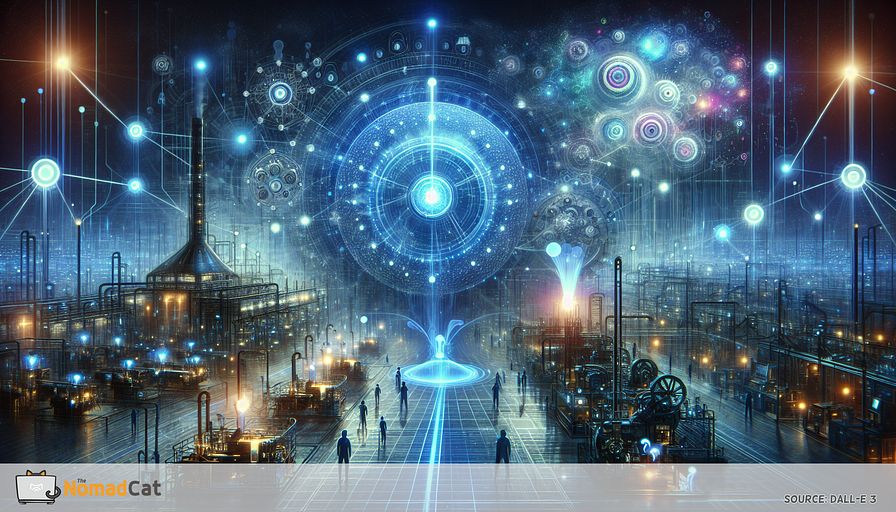Revolutionizing Maintenance: ML and IoT Integration
Abstract:
Predictive maintenance uses machine learning and edge computing to anticipate machinery issues, reducing downtime and costs. Machine learning enables the analysis of IoT data to predict equipment failures, while edge computing allows real-time data processing. Technology leaders play a crucial role in implementing these strategies and ensuring teams are equipped with the necessary skills. Predictive analytics and maintenance optimization are also vital components. Ultimately, leveraging these technologies can enhance maintenance operations and competitiveness.
predictive maintenance and technological impact
Did you know that unplanned downtime costs the manufacturing industry an estimated $50 billion annually? It's not just a hefty price tag; it's a significant challenge that's transformed the way industries perceive maintenance. In my role as Chief Technology Officer, I've witnessed firsthand how emerging technologies can revolutionize age-old practices, making them more efficient and cost-effective.
Predictive maintenance isn't just a buzzword; it's a fundamental shift from the old "fix it when it's broken" ideology. Instead, it leverages data to foresee and avert problems before they occur. The integration of machine learning (ML) and the Internet of Things (IoT) is spearheading this shift, leading us into a future where maintenance is not merely reactive but highly proactive.
Let's break it down a bit. Machine Learning allows us to harness vast amounts of data, discern patterns, and make informed predictions about equipment health. On the flip side, IoT devices act as diligent, on-the-ground data collectors. By embedding sensors in machinery, we're able to gain real-time insights into equipment performance, temperature, vibration, and other critical parameters. Together, these technologies don't just provide data; they create a symphony of information that can predict failures before they happen.
But there's another player in the game who often flies under the radar: edge computing. Think of it as the unsung hero that enables real-time data processing without latency. In a nutshell, edge computing moves data processing closer to the source—right where the IoT devices are. This reduces the time it takes to analyze data and react, ultimately minimizing downtime and operational costs.
In essence, the union of ML and IoT, supercharged by edge computing, is the trifecta that's redefining maintenance in various industries. It enables quicker, smarter decision-making, ensuring equipment uptime and significantly slashing unexpected costs. A touch of technological magic transforms mundane maintenance into a sophisticated, data-driven operation.
As we embark on this exciting journey, let’s not overlook the challenges and opportunities that come with implementing these advanced systems. From the essential skills development to the strategies for smooth integration, the road ahead is thrilling, albeit complex. Buckle up; it's going to be quite a ride!
machine learning and iot: data analysis and predictive capabilities
When we talk about predictive maintenance, the magic really happens at the intersection of machine learning (ML) and IoT. The data we collect from IoT sensors is only as valuable as the insights we can extract from it. That's where ML steps in, taking raw data and transforming it into actionable intelligence.
analyzing the data types
So, what kind of data are we looking at? Typically, the sensors embedded within machinery collect various types of information:
- Temperature: Monitoring the heat levels can help us identify overheating issues before they become critical.
- Vibration: Abnormal vibrations can signal mechanical failures, lack of lubrication, or imbalance in machinery.
- Usage patterns: Tracking how often and how intensively a machine is used can reveal wear and tear trends.
These data points, among others, are the lifeblood of our predictive models. When we aggregate and analyze this information, we can start to predict when and where maintenance might be needed.
how machine learning algorithms work their magic
Here's the fun part. Machine learning algorithms excel at identifying patterns in data. By training these algorithms on historical data sets under diverse conditions, we can teach them to recognize early warning signs of potential failures. Over time, these algorithms get better at predicting outcomes as they are exposed to more data.
For instance, an ML algorithm can analyze the vibration data from several similar machines. Based on past occurrences, it can predict that a certain vibration pattern is the precursor to a specific type of mechanical failure. This prediction allows maintenance teams to intervene before the failure happens, saving significant costs and preventing downtime.
The accuracy and reliability of these predictions grow over time, making operational maintenance more efficient. Advanced ML models can even adjust their parameters on the fly, adapting to new patterns and anomalies. This adaptive learning capability is like having a crystal ball for your equipment—one that gets clearer with each passing day.
real-world applications
Several industries are already reaping the rewards of predictive maintenance powered by ML and IoT. Take the aviation industry, for example. Airlines use this technology to monitor and maintain aircraft engines, significantly reducing the risks of in-flight failures and minimizing delays due to unscheduled maintenance.
Similarly, in manufacturing, companies like Siemens have successfully implemented predictive maintenance solutions. Their systems continuously monitor equipment and use predictive analytics to schedule maintenance activities. It's a win-win: extended equipment life and reduced maintenance costs.
Don't just take my word for it. A case study from McKinsey highlights how a North American chemical company achieved a 10% reduction in maintenance costs and a 50% reduction in unplanned outages by adopting a predictive maintenance approach utilizing ML and IoT.
Leveraging these technologies doesn't just make operations smoother; it fundamentally changes how we perceive and handle maintenance. Imagine having the peace of mind that comes from knowing issues will be flagged—and addressed—before anything breaks down. It's not just efficient; it's revolutionary.
As we continue to explore the capabilities of ML and IoT, I'm certain we'll see even more industries hopping on the predictive maintenance bandwagon. The future is bright for those willing to embrace these technologies, and the potential for operational excellence is limitless.
role of edge computing in real-time data processing
Let's talk about the unsung hero of predictive maintenance: edge computing. Trust me, it's a game changer. When you pair machine learning with IoT, you get a treasure trove of data points, but processing this data fast enough to act on it can be challenging. That’s where edge computing steps in, like a knight in shining armor.
Edge computing allows us to process data locally on the device or near the data source, rather than sending it all the way back to a central server or cloud. The advantage? Reduced latency and decreased reliance on centralized cloud computing. This becomes especially critical in environments where real-time data processing is paramount, and waiting for cloud processing could mean costly delays.
scenarios requiring real-time data processing
Now, imagine a remote oil rig in the middle of the ocean. Getting data back and forth across vast distances isn't just slow; it can be downright impractical. In such settings, having local data processing is crucial. Edge computing allows us to analyze the equipment's health on-site, triggering essential maintenance actions immediately rather than waiting for data to round-trip to a distant cloud server.
Another scenario is a bustling factory floor churning out products 24/7. Here, any downtime translates to massive losses. Quick decision-making is crucial, and even a few milliseconds saved in data processing can make a substantial difference. Edge computing facilitates instantaneous insights and actions, ensuring that any irregularities are nipped in the bud before they escalate into costly problems.
benefits of reduced data transmission times
There are several juicy perks to reduced data transmission. With edge computing, you get:
- Instant insights: Analyze data in real-time and act on it immediately. No more waiting around for cloud servers to respond.
- Lower bandwidth usage: Since only essential data is sent to the cloud later, the bandwidth requirement drops significantly.
- Enhanced security: By processing sensitive data locally, you reduce the risk of interception during transmission.
- Greater reliability: Local processing means your systems can function autonomously, even if internet connectivity is intermittent or slow.
This swift processing and reduced data transmission time directly translate to better operational efficiency and minimized downtime. It's like having your cake and eating it too: The real-time insights are the cherry on top.
role of tech leaders in deploying edge computing
Here is where I, as a Chief Technology Officer, step in with my cape fluttering in the wind (well, metaphorically). The deployment and management of edge computing resources require thoughtful planning and the right infrastructure. Our tech leaders need to ensure that appropriate hardware is in place, capable of handling the necessary processing power right at the source of data collection.
Another pivotal aspect is skills development. Our teams need to be adept at managing edge computing resources, which can be quite different from traditional cloud resources. This means investing in training programs and hiring talent with the right skill set to manage and optimize these edge resources effectively.
Fortunately, many real-world applications have already demonstrated the efficacy of edge computing in predictive maintenance. For instance, in the automotive industry, manufacturers use edge computing to monitor vehicles' health in real-time, alerting drivers to potential issues before they become critical. Similarly, in renewable energy, companies use edge computing to monitor the performance and health of wind turbines in real-time, ensuring they operate at peak efficiency.
Edge computing acts as the perfect ally to ML and IoT, delivering the benefits of real-time data processing with unmatched efficiency. By skillfully deploying and managing these resources, we can pioneer a new era of proactive maintenance, keeping our operations smooth and our downtime minimal.
implementation strategies and skills development
Alright, let's dive into the nitty-gritty of bringing predictive maintenance frameworks to life. Implementing these advanced systems isn’t a walk in the park, but the rewards are well worth the effort. Trust me, as a Chief Technology Officer, I’ve got a front-row seat to the challenges and triumphs in integrating these technologies.
strategies to kickstart predictive maintenance
First things first: you need a solid strategy. Every successful implementation kicks off with a clear roadmap. Start by identifying your critical assets and the data metrics that can be gathered from them. Understanding what you want to monitor sets the stage for your IoT sensor deployment.
Engage with stakeholders from the get-go, ensuring everyone from the floor technician to the executive suite knows the plan and the expected outcomes. Communication and alignment across the board are critical for smooth execution. Believe me, keeping everyone on the same page makes a world of difference.
tech leaders: the captains of this ship
You can't sail this ship without strong leadership. Technology leaders play a vital role in driving these initiatives. We need to ensure that the right infrastructure is in place, from robust IoT networks to powerful edge computing resources capable of handling real-time data crunching.
It’s also about being hands-on. Regularly review the roadmap, assess milestones, and pivot when necessary. Flexibility can turn potential roadblocks into stepping stones. And don’t forget the power of collaboration—partnering with external experts can provide insights that you might otherwise miss. Remember, even superheroes need a sidekick now and then!
importance of skills development
Now, let's talk skills. Deploying predictive maintenance means stepping into a new territory and requires a shift in skillsets. It’s essential to equip your teams with the knowledge and tools they need to manage this new tech. Investing in continuous training programs is non-negotiable. The goal is to build a team that's not just good but exceptional at interpreting IoT data and maintaining the ML models.
Workshops, certifications, and hands-on training sessions can turn your existing staff into powerhouse operators. And don’t just focus on the techies; your entire organization should understand how predictive maintenance fits into the broader business strategy.
the competitive edge
Let's face it: in the ultra-competitive world of manufacturing and engineering, any edge can be your golden ticket. Predictive maintenance provides that edge. Reduced downtime, lower operational costs, and extended equipment life translate to better bottom lines and happier customers.
From my perspective, the long-term return on investment is not just a number but a reality that sets your business apart. Decision-making becomes more informed, maintenance becomes smarter, and overall efficiency skyrockets. It’s like giving your operational engine a tune-up for peak performance.
embracing change and innovation
Don’t underestimate the human factor in this tech-heavy journey. Change management is crucial. Create an environment that embraces change and encourages innovation. Foster a culture where new ideas are welcomed, and failures are seen as learning opportunities. The end goal is to build a resilient organization that continuously improves and innovates.
So, tech leaders, it’s time to roll up our sleeves and get to work. By driving these initiatives, ensuring ongoing training, and fostering a culture of innovation, we set our organizations on a course for success. The future of maintenance is bright and data-driven, and we’re at the helm, steering toward a horizon filled with continuous improvement and operational excellence.














